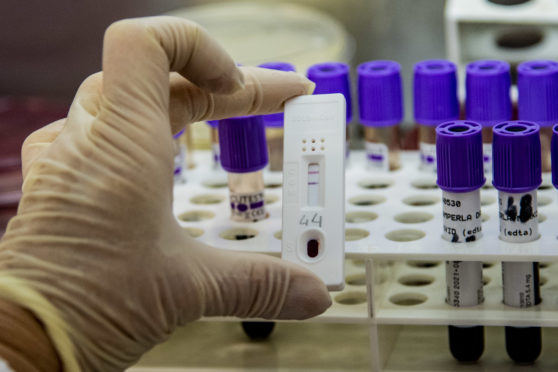
The number of lives lost to Covid may never be known because not enough post-mortems are being carried out, pathologists warn.
The true toll taken by the pandemic will remain uncertain while the chance to obtain potentially crucial information about the virus is being lost because mortuaries cannot carry out enough post-mortem examinations and testing. Pathologists say the sheer number of deaths means they have been unable to carry out sufficient studies of the deceased in order to learn how the virus attacks the body.
Doctors in Scotland do not have to examine a body to issue a death certificate and are only required to state the likely cause of death. Now leading pathologists fear this, and the lack of post-mortems for a substantial number of suspected coronavirus cases, means the true toll of Scottish victims will never be known.
Dr Mike Osborn, a consultant histopathologist and chairman of the Royal College of Pathologists’ death investigations committee, believes 1,000 more post-mortems would have provided lifesaving research into the virus.
“Only a few were carried out in the UK – including 10 at Imperial College, London and a small number in Edinburgh,” he said. “Around 1,000 are needed from all UK regions, ages, ethnic and socio-economic groups, and at all stages of the pandemic. Those numbers and diversity are needed for good research.
“With consent of next-of-kin, we can examine tissue and look at pathophysiology, which tells us about how the disease process works and (the virus) goes about damaging the body’s organs.
“However, we have been hampered by capacity issues. Have we missed an opportunity? Had resources been better, we could have learned much more about Covid.”
A forensic pathologist based in Scotland, who asked not to be named, said: “We may never know the true number of people who die from Covid because there are not enough facilities in the forensic or hospital service to carry out post-mortems on large number of deaths during this pandemic.
“There is only a small number of forensic pathologists in the country. Nor is there likely to be enough provision to examine all the pathology (from these deceased) and test for Covid. No one has the resources for the number of deaths from the virus. Testing is for the living at this time.”
Professor Tony Busuttil, a retired forensic pathologist, said: “I am sure we may never record a completely accurate number of deaths from Covid-19, unless all who die have a Covid-19 swab test. Without this, the global incidence in relation to deaths cannot accurately determined.
“The entire focus and energy involved in the tests have been on the living, and this is surely a better use of the available resources initially over-stretched.”
Professor Busuttil added that Covid-19 might be missed as a cause of death, or included without a formal test.
“Some individuals who have died unexpectedly at home and have not been seen medically, and thus require to have an autopsy, have on occasions been shown to be positive for Covid-19. This is, however, a very small number of cases overall,” he said. “People who died in care or nursing homes, or at home, after showing symptoms, and who had been seen by a doctor directly or on a video link within the past four weeks, have had Covid-19 included in their death certificate even if they had not been tested formally.”
Meanwhile, Dr Osborn’s call for more post-mortems has been backed by John Lee, formerly clinical professor of pathology at Hull York Medical School. He said that, while Covid-19 might be mentioned on a death certificate, this might be little more than speculation.He said: “In what proportion of Covid-19 ‘mentions’ was the disease actually present? And in how many cases was Covid-19 responsible for death? Despite what you may have understood from daily briefings, the shocking truth is that we just don’t know.”

Enjoy the convenience of having The Sunday Post delivered as a digital ePaper straight to your smartphone, tablet or computer.
Subscribe for only £5.49 a month and enjoy all the benefits of the printed paper as a digital replica.
Subscribe